The Constitution of India is the supreme law of the land, laying the foundation of Indian democracy. Its making was a historic journey that reflected the aspirations of a diverse and emerging nation. The making of the Indian Constitution is a remarkable milestone in the history of independent India. Crafted through meticulous deliberations and visionary leadership, the Indian Constitution is a testament to the aspirations and ideals of a diverse nation.
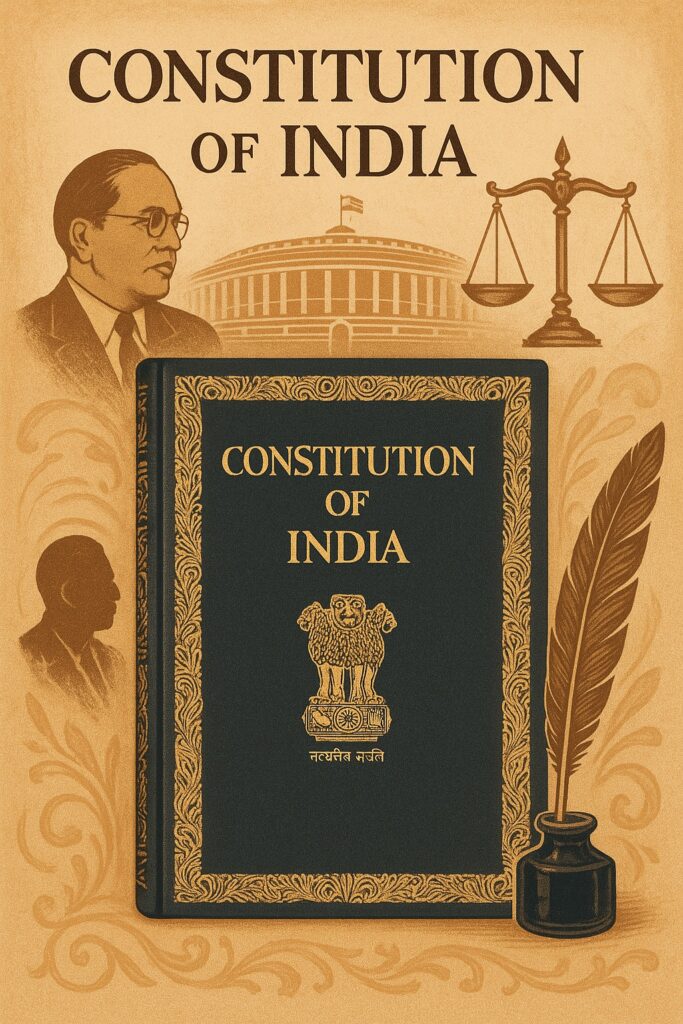
Table of Contents
Historical Background
The demand for a Constitution of India began during the Indian freedom struggle, as leaders sought self-governance and a democratic framework for the country.
- In 1934, M.N. Roy was the first to propose the idea of a Constituent Assembly to frame the Constitution of India.
- The Indian National Congress formally demanded the establishment of a Constituent Assembly in 1935, emphasizing that Indians should draft their own Constitution.
- The British government accepted this demand through the Cabinet Mission Plan of 1946, which outlined the process for forming the Constituent Assembly and drafting the Constitution.
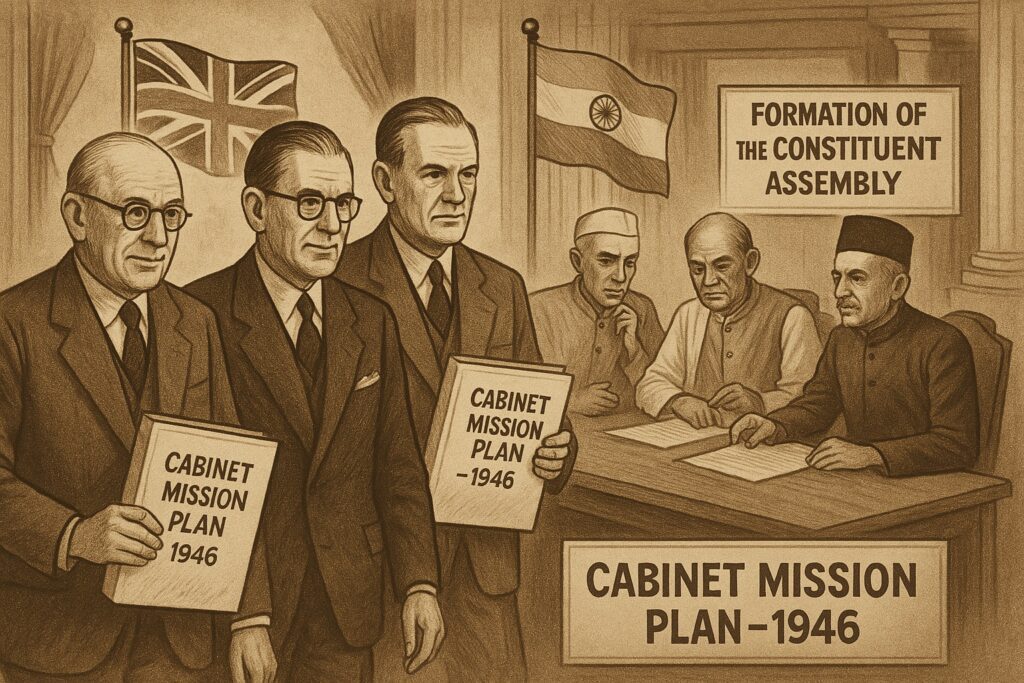
Formation of the Constituent Assembly
- The Constituent Assembly was formed in 1946.
- It had 389 members, including representatives from provinces and princely states.
- After partition in 1947, the number was reduced to 299.
- The Assembly included leaders like Dr. B.R. Ambedkar, Jawaharlal Nehru, Sardar Patel, Rajendra Prasad, and many others.
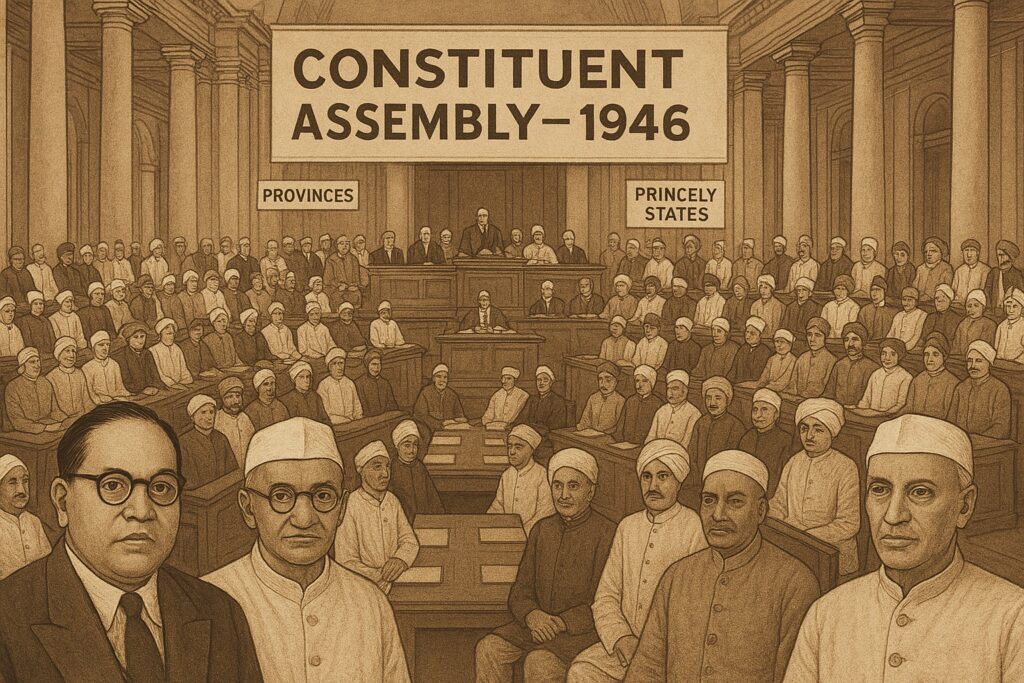
Working of the Constituent Assembly
- The first meeting was held on 9th December 1946.
- Dr. Rajendra Prasad was elected the President of the Assembly.
- Dr. B.R. Ambedkar was appointed as the Chairman of the Drafting Committee on 29th August 1947.
- The Assembly worked through committees and full sessions.
- It held 11 sessions over 2 years, 11 months, and 18 days.
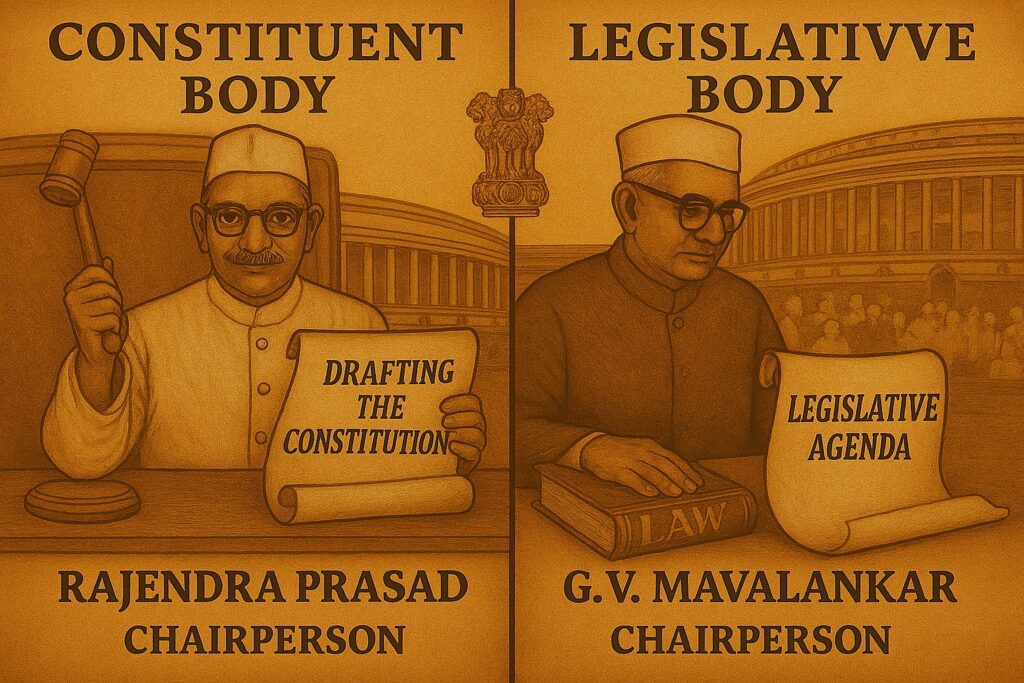
Features of the Constitution-Making Process
- The Constitution was framed through discussion and consensus.
- It borrowed features from many foreign constitutions (like the British, U.S., Irish, and Canadian).
- It reflected Indian values and needs, including social justice, liberty, equality, and fraternity.
- Over 2000 amendments were considered before finalizing the draft.
Objective Resolution
The Objective Resolution was a historic declaration that laid down the guiding principles for the Indian Constitution. It was introduced by Jawaharlal Nehru in the Constituent Assembly on 13th December 1946 and adopted on 22nd January 1947.
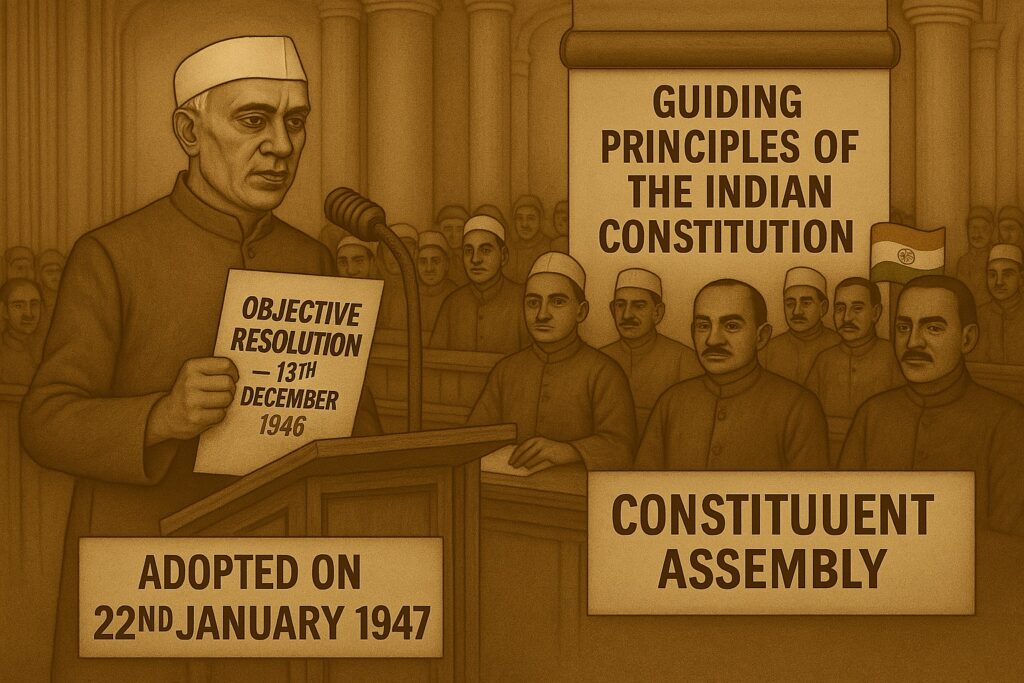
Main Objectives of the Resolution
- India to be an Independent Sovereign Republic.
- Assurance of justice, equality, and freedom to all citizens.
- Protection of minorities, backward classes, and other weaker sections.
- Safeguarding of territorial integrity and unity of the nation.
- Promotion of international peace and cooperation.
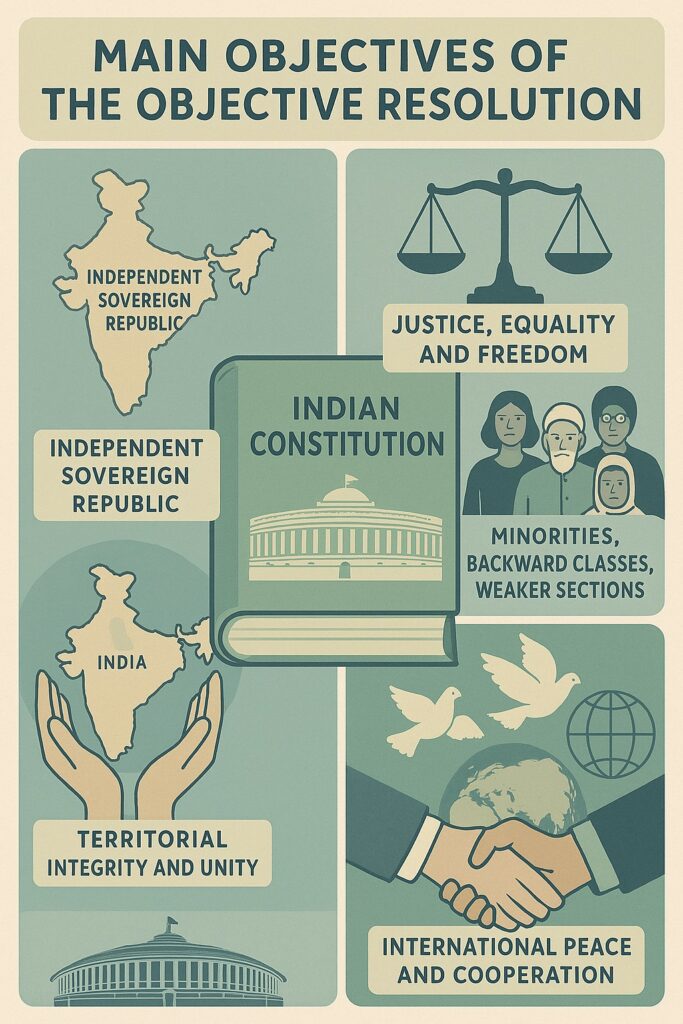
Significance of the Objective Resolution
- It provided a philosophical foundation for the Constitution.
- Served as the blueprint for the Preamble of the Indian Constitution.
- Reflected the aspirations and values of the Indian freedom movement.
- Unified various sections of the Constituent Assembly under common goals.
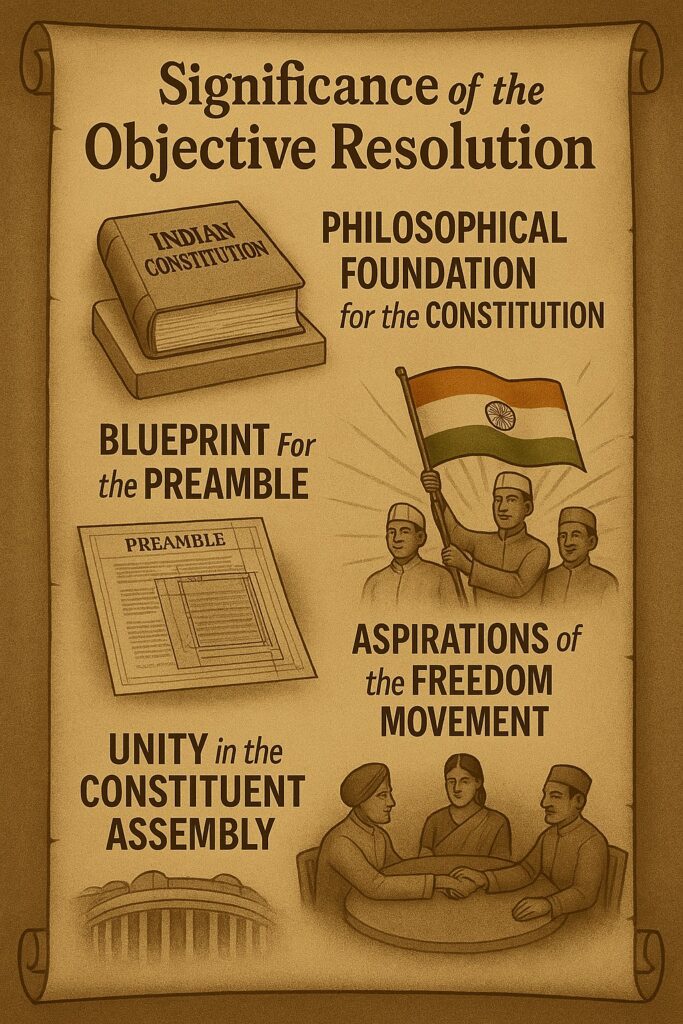
The Objective Resolution was the vision statement for the Constitution. It inspired the framing of a document that would uphold democracy, secularism, and justice, and ensure the dignity and rights of every citizen of India.
Committees of the Constituent Assembly
The Constituent Assembly of India formed several committees to carry out detailed work in drafting the Constitution. These committees were classified into two main types:
Major Committees
These dealt with the core structure and content of the Constitution.
Drafting Committee
The Drafting Committee was one of the most important committees of the Constituent Assembly. It was responsible for preparing the draft of the Indian Constitution.

Formation
- Formed on 29th August 1947
- Consisted of seven members
- Dr B R Ambedkar was appointed as the Chairman
Members of the Drafting Committee
- Dr B R Ambedkar
- N Gopalaswami Ayyangar
- Alladi Krishnaswami Ayyar
- Dr K M Munshi
- Syed Mohammad Saadullah
- N Madhava Rau replaced B L Mitter
- T T Krishnamachari replaced D P Khaitan
Functions and Role
- Studied reports from various other committees
- Prepared the first draft of the Constitution
- Incorporated suggestions from debates in the Constituent Assembly
- Ensured inclusion of provisions such as fundamental rights, federal structure, parliamentary system, and social justice
Significance
- Translated broad ideas into legal language
- Gave the Constitution a clear and practical structure
- Dr B R Ambedkar is known as the Chief Architect of the Indian Constitution due to his leadership
The Drafting Committee played a vital role in shaping the Indian Constitution. Its work reflected the hopes, values, and needs of independent India.
Union Powers Committee
The Union Powers Committee was one of the important committees formed by the Constituent Assembly of India in 1947 to assist in the framing of the Constitution.
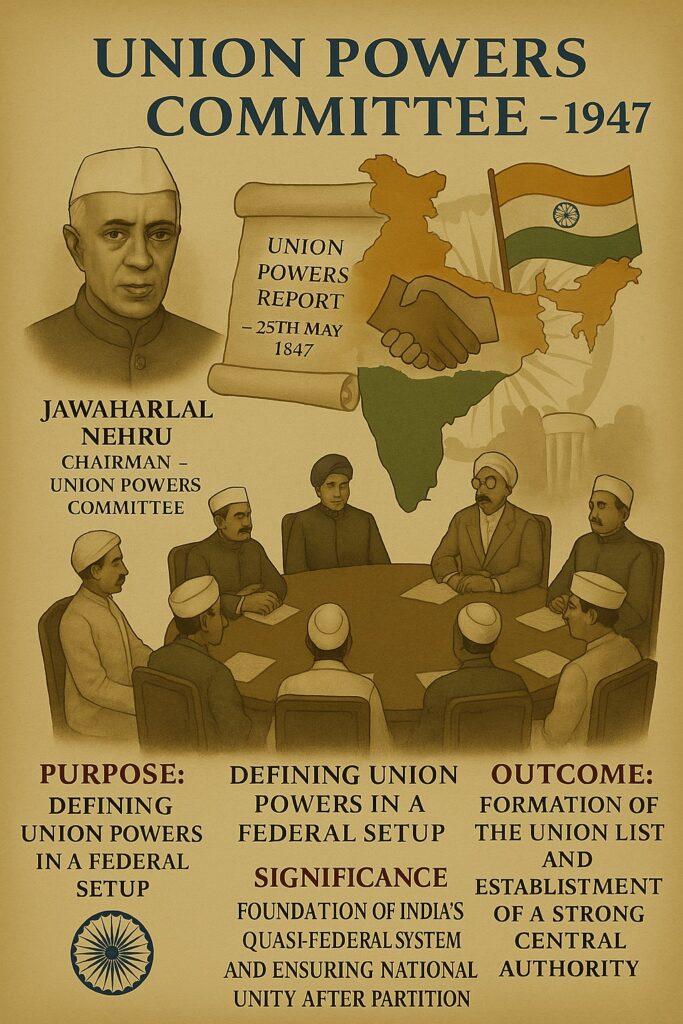
Purpose
The main aim of the Union Powers Committee was to define and recommend the powers to be vested in the Union (central) government. It focused on establishing the scope of central authority in a federal structure.
Key Details
- Chairman: Jawaharlal Nehru
- Formed on: 25th May 1947
- Main Objective: To examine and propose the subjects and powers that should be assigned to the Union Government.
- It played a critical role in shaping the Union List and central authority provisions in the Constitution.
Significance
- Helped lay the foundation of India’s quasi-federal system, where the Union Government has a strong and dominant position.
- Ensured national unity and integrity, especially important during the time of Partition and integration of princely states.
The work of this committee was vital in balancing the power between the central government and the states in post-independence India.
Union Constitution Committee
The Union Constitution Committee was one of the key committees set up by the Constituent Assembly of India in 1947 to draft the framework of India’s Constitution, particularly relating to the structure and functioning of the Union Government.
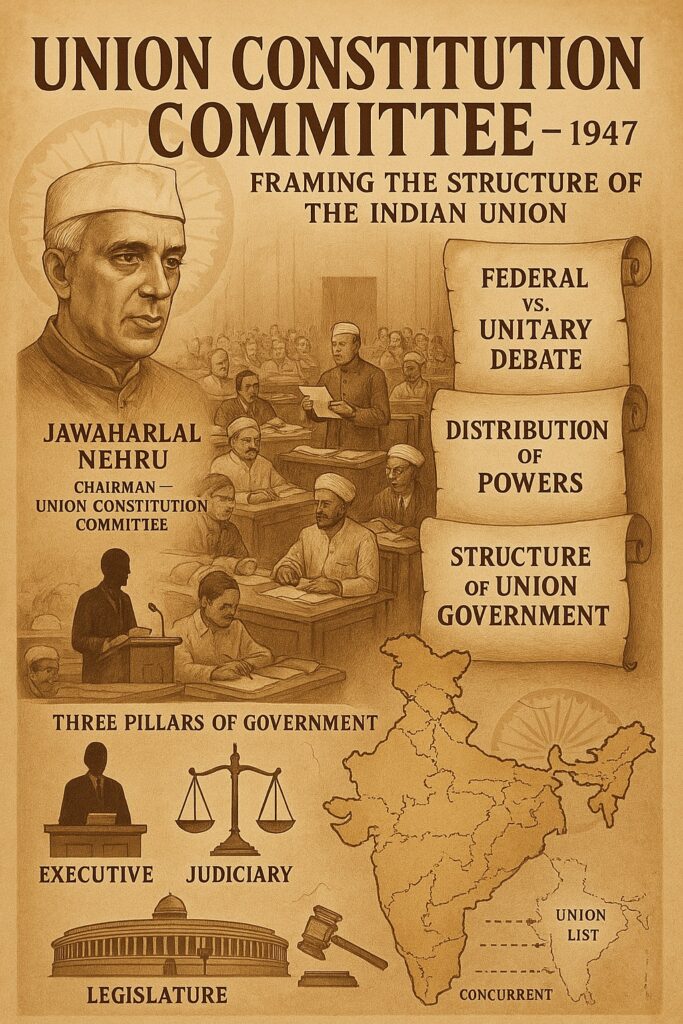
Key Details
-
Chairman: Jawaharlal Nehru
-
Formed on: 25th May 1947
-
Main Focus:
-
Decide on the federal or unitary nature of the Constitution.
-
Determine the distribution of powers between the Centre and the provinces.
-
Recommend the structure of the Union Government, including its executive, legislature, and judiciary.
-
Significance
-
Played a crucial role in shaping India as a Union of States with a strong Centre.
-
Helped define the federal features while ensuring national unity and integrity.
-
Its recommendations contributed to the creation of a parliamentary system and laid the groundwork for the division of powers in the Constitution (Union List, State List, and Concurrent List).
In summary, the Union Constitution Committee provided the structural blueprint for the central government of independent India, influencing the federal character and democratic setup of the Indian Republic.
Provincial Constitution Committee
The Provincial Constitution Committee was one of the key advisory bodies formed by the Constituent Assembly of India in 1947. It was responsible for recommending the structure and powers of the provincial (state) governments in independent India.
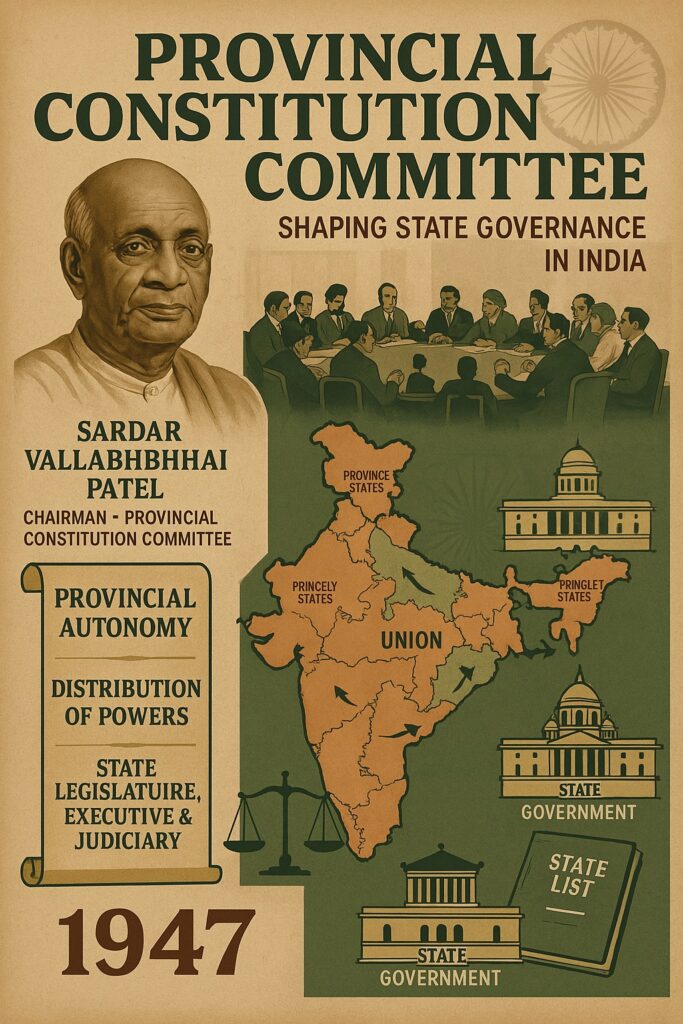
Purpose
To propose a constitutional framework for the provinces within a federal structure, ensuring a clear distribution of powers between the Union and the states.
Key Details
- Chairman: Sardar Vallabhbhai Patel
- Formed on: 25th May 1947
Main Objectives
-
- Define the organization and powers of provincial governments.
- Recommend the relationship between the Union and the provinces.
- Suggest provisions for provincial autonomy, governance, and coordination.
Significance
- Played a vital role in developing the federal character of the Indian Constitution.
- Helped shape the State List and provisions that empowered state governments to function independently within their jurisdiction.
- Facilitated the integration of princely states and provinces into a cohesive Indian Union.
- Contributed to the establishment of state-level legislatures, executives, and judiciaries.
In summary, the Provincial Constitution Committee laid the foundation for state governance in India by ensuring a balanced and cooperative federal structure, crucial for India’s unity and administrative efficiency after independence.
Advisory Committee on Fundamental Rights, Minorities, and Tribal and Excluded Areas
The Advisory Committee on Fundamental Rights, Minorities, and Tribal and Excluded Areas was one of the most important committees formed by the Constituent Assembly of India in January 1947. It played a crucial role in shaping the Fundamental Rights, and in protecting the rights of minorities, tribal groups, and people in excluded areas.
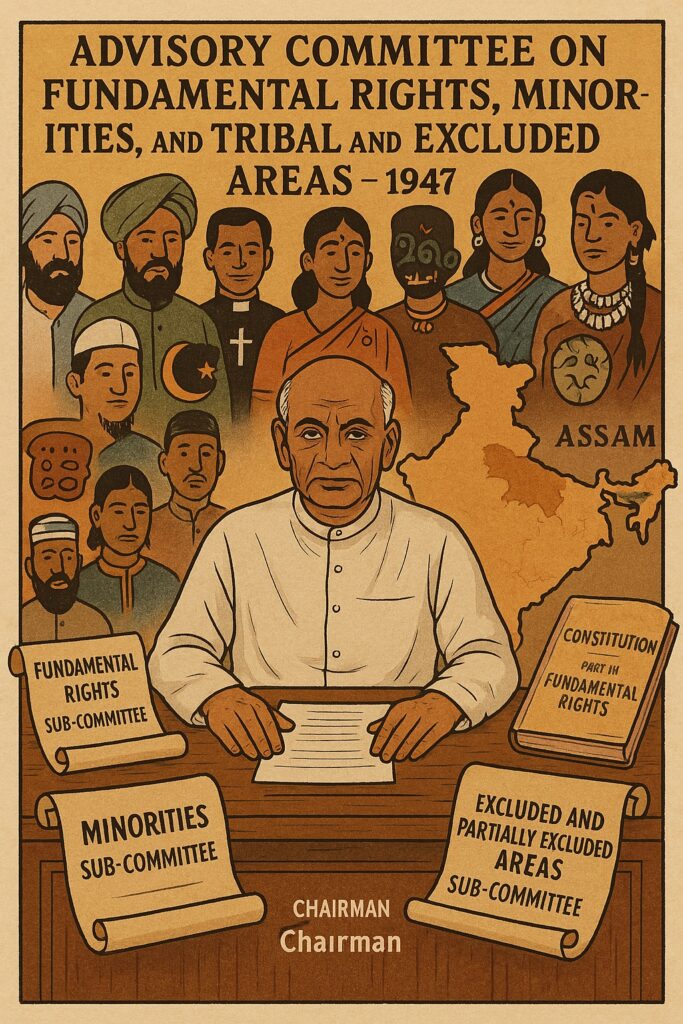
Purpose
To recommend constitutional safeguards for:
- Fundamental Rights of all citizens,
- Minority rights,
- The administration and protection of tribal and excluded areas.
Key Details
- Chairman: Sardar Vallabhbhai Patel
- Formed on: 24th January 1947
- Divided into sub-committees:
- Fundamental Rights Sub-Committee
- Minorities Sub-Committee
- Excluded and Partially Excluded Areas Sub-Committee (for Assam and other regions)
Main Objectives
- Draft a list of Fundamental Rights for inclusion in the Constitution.
- Recommend measures for the protection of minorities based on religion, language, and culture.
- Provide guidelines for the governance and development of tribal areas and regions with special needs.
Significance
- Laid the foundation for Part III of the Constitution: Fundamental Rights.
- Ensured constitutional provisions for the protection and promotion of minority interests.
- Addressed the unique challenges of tribal and excluded areas, influencing the creation of the Fifth and Sixth Schedules.
- Reflected the inclusive spirit of the Indian Constitution by recognizing the diversity and rights of various communities.
In summary, the Advisory Committee was instrumental in ensuring that the Indian Constitution upheld justice, equality, and inclusivity, especially for vulnerable and diverse sections of Indian society.
Steering Committee
The Steering Committee was an essential committee formed by the Constituent Assembly of India to oversee and coordinate the functioning of the Assembly and its various committees during the drafting of the Constitution.
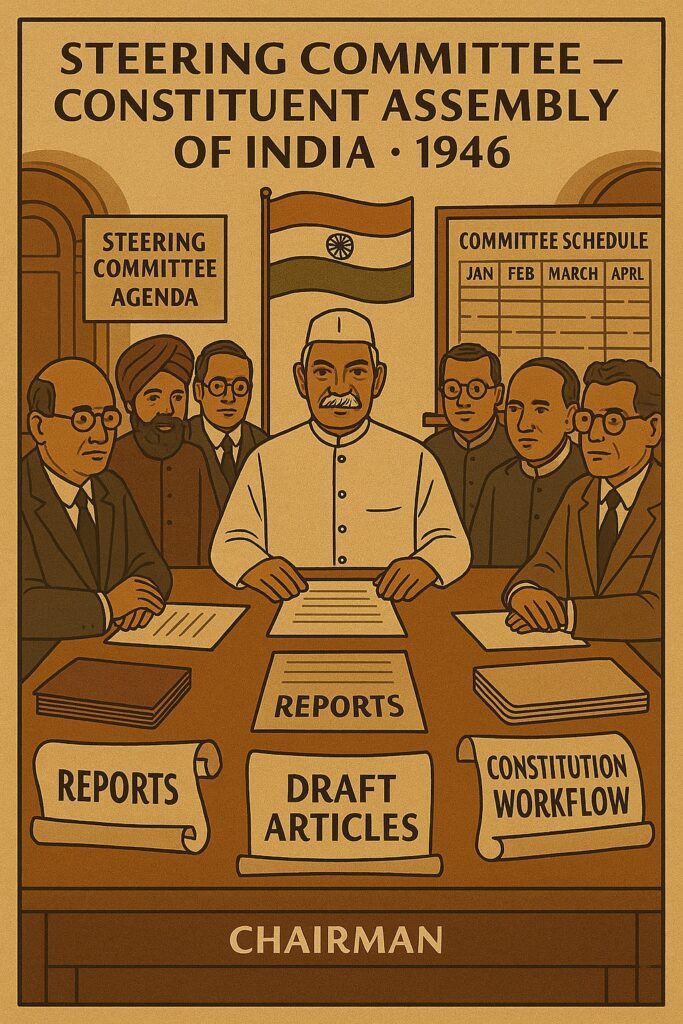
Purpose
To manage the day-to-day business of the Constituent Assembly and ensure smooth coordination between different committees and the Assembly sessions.
Key Details
- Chairman: Dr. Rajendra Prasad (who was also the President of the Constituent Assembly)
- Formed on: Steering Committee was constituted in December 1946
- Included chairpersons of major committees of the Assembly.
Main Functions
- Prepare the agenda and schedule for Assembly meetings.
- Coordinate the workload and progress of various committees.
- Facilitate the presentation of reports and draft articles from committees to the full Assembly.
- Ensure orderly and efficient functioning of the drafting process.
Significance
- Acted as the central administrative body during the Constitution-making process.
- Ensured that all committees worked in synchronization, avoiding delays and conflicts.
- Played a key role in keeping the Constitution-making process organized and time-bound.
In summary, the Steering Committee served as the backbone of the Constituent Assembly’s workflow, helping manage its complex operations and enabling the successful drafting of the world’s longest written Constitution.
Minor Committees
These handled specific areas and provided detailed recommendations:
- Credentials Committee – Verified the credentials of Assembly members.
- Rules of Procedure Committee – Formulated the working rules of the Assembly.
- States Committee (Princely States) – Dealt with princely state integration.
- Order of Business Committee – Scheduled and arranged Assembly meetings.
- House Committee – Managed accommodation and facilities for members.
- Language Committee – Dealt with language-related issues in the Constitution.
- Finance and Staff Committee – Handled financial matters and staffing.
Adoption and Enforcement
- The Constitution was adopted on 26th November 1949.
- It came into effect on 26th January 1950, celebrated as Republic Day.
- On this day, India became a sovereign democratic republic.
Significance of the Constitution
- It provides a federal structure with a strong central government.
- It guarantees Fundamental Rights to all citizens.
- It lays down Directive Principles of State Policy to guide governance.
- It establishes an independent judiciary and a parliamentary system.
Conclusion
The making of the Indian Constitution was a landmark achievement. It was a product of visionary leadership, rich debate, and democratic values. It continues to guide India in its journey toward justice, equality, and progress.
Read: Polity Notes